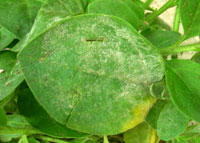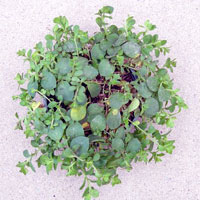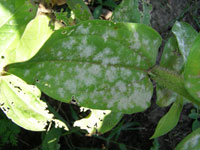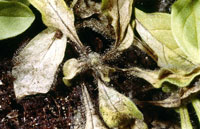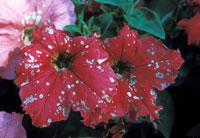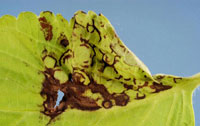Extension > Garden > Diagnose a problem > What's wrong with my plant? > Annuals and Perennials > Petunia > Spots or blotches on leaves
Petunia > Leaves > Spots or blotches on leaves
1 of 3
Powdery Mildew
Oidium sp.
- Powdery, fluffy white spots or blotches on leaves, stems, and flower parts
- Tiny black round spheres may be visible within white spots late in the season
- Spots typically start on lower leaves but can spread to cover the entire plant
- Severely infected leaves may be completely covered in white or grayish white fungi
- In some cases, leaves become curled or twisted or turn yellow due to the infection
- More information on Powdery Mildew
2 of 3
Gray Mold
Botrytis cinerea
- Large brown spots or blotches on leaves
- Leaves or entire plant may be completely blighted, brown, and wilted
- Blossoms or petals may turn brown and drop off prematurely
- Gray fuzzy mold develops on rotted tissue under humid conditions
- Disease develops during cool, wet weather
- More information on Gray Mold
3 of 3
Impatiens Necrotic Spot Virus (INSV) or Tomato Spotted Wilt Virus (TSWV)
- Symptoms may vary depending on cultivar, age of plant and other factors
- Brown to black ring spots or flecks on leaves
- Plants may be stunted and have distorted leaves
- Severely infected young plants may turn brown and die
- Lab test needed to identify which virus is causing the problem
- More information on INSV and TSWV



